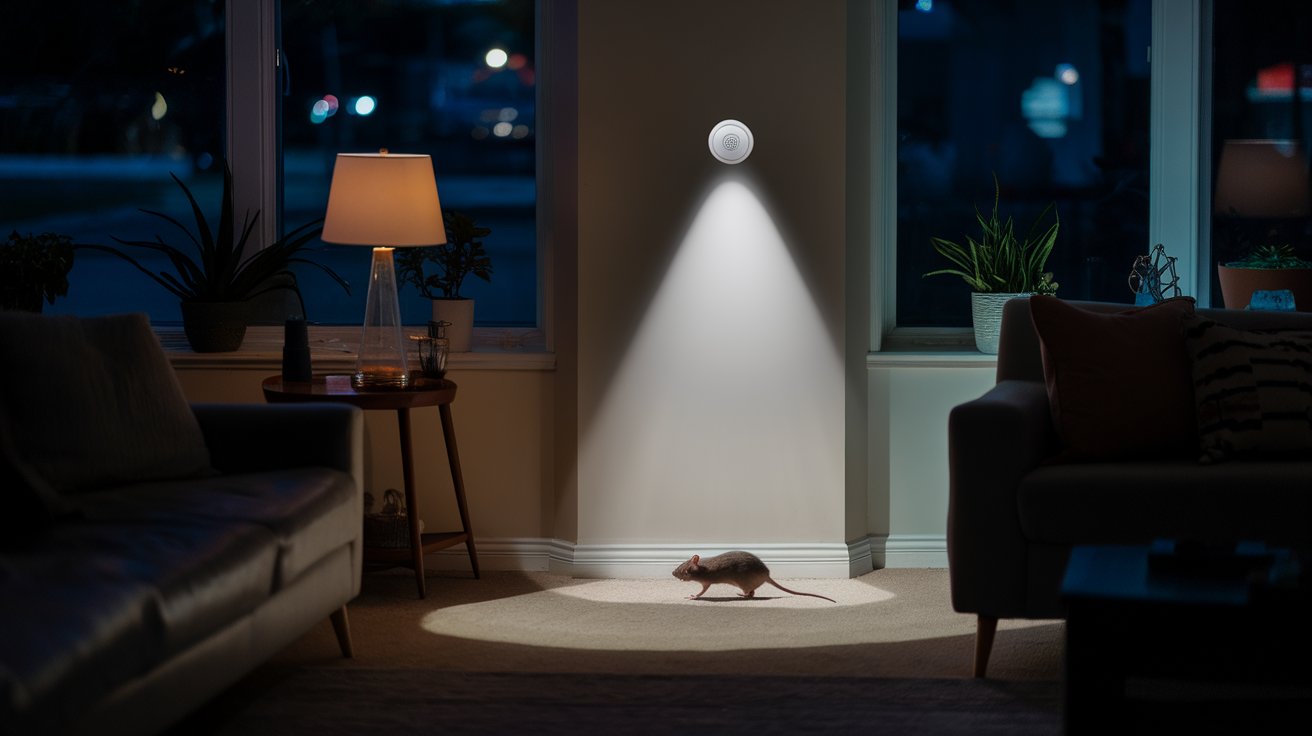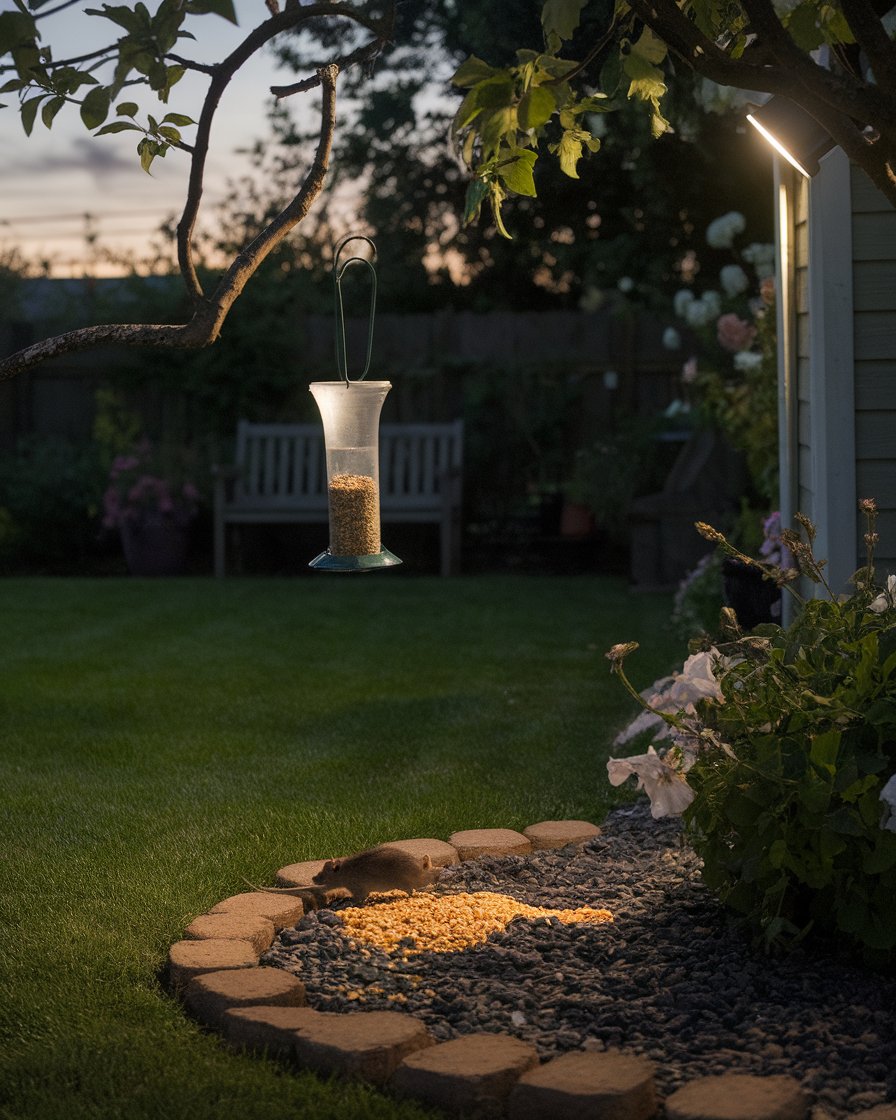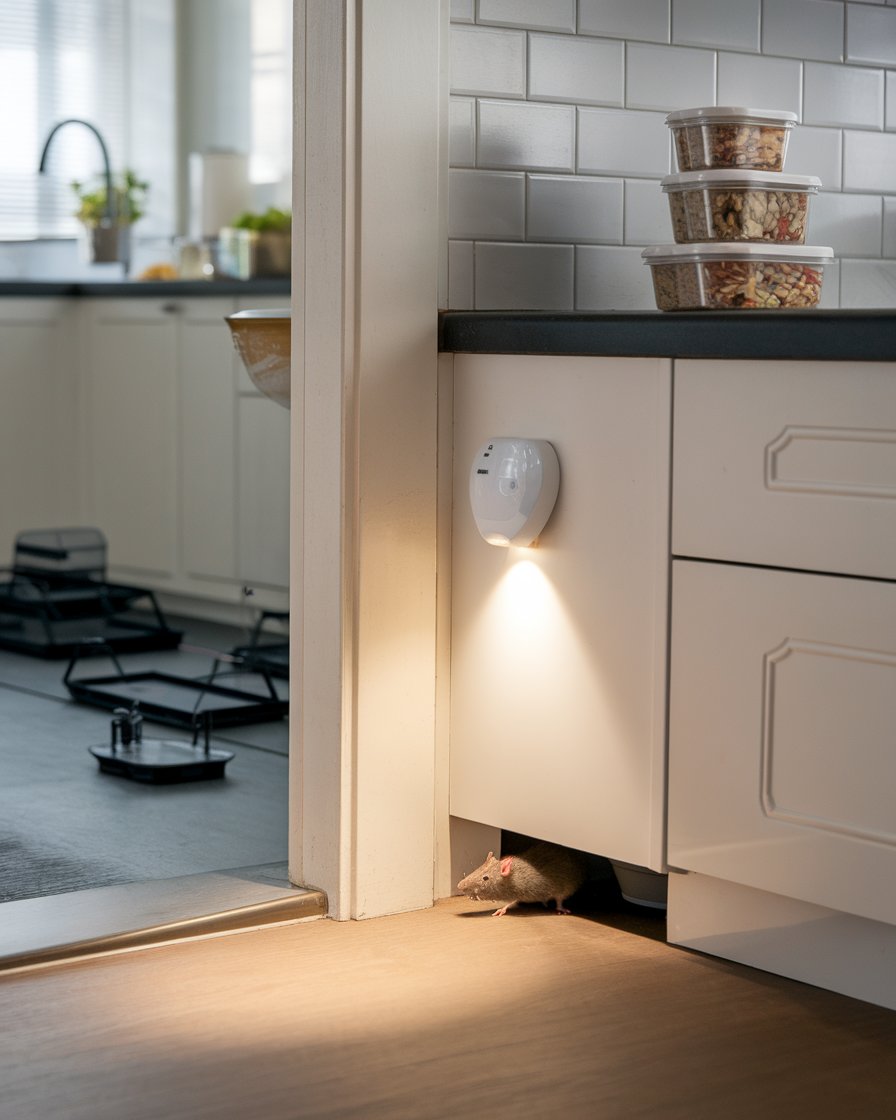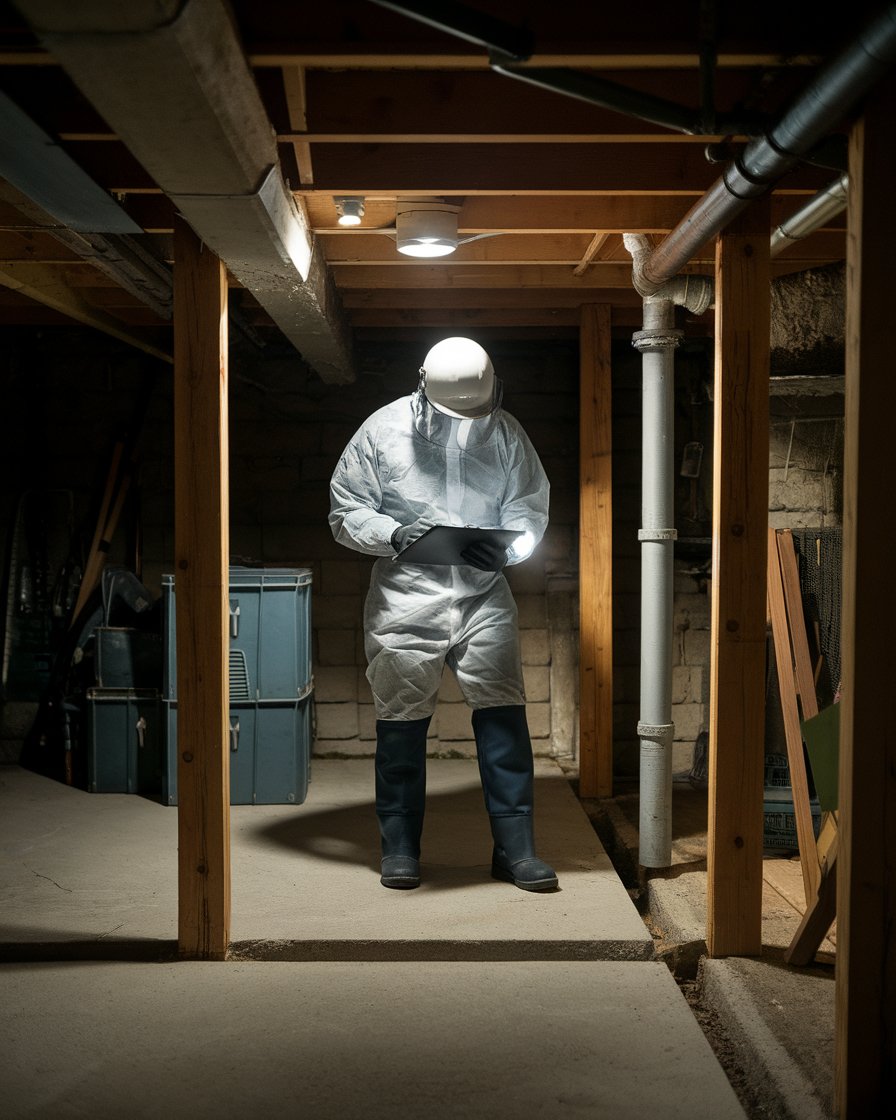Introduction
Rats are highly adaptable creatures, known for their ability to survive in various environments. Their behavior is largely influenced by the need for food, water, and shelter, making them opportunistic feeders. Rats avoid light and tend to be more active at night, seeking out dark, enclosed spaces to hide from predators and humans. Despite their tendency to prefer darkness, they can adapt to certain light conditions if the reward—like food or safety—is enticing enough. Understanding how rats respond to their environment is key to controlling their presence and preventing infestations.
Light can be used as a partial repellent, as rats are sensitive to bright bursts of light. Many homeowners try leaving lights on or using motion sensor lights to keep rats away. However, this alone is often not enough. While rats avoid light in most cases, they may still venture into well-lit areas if they feel safe or are in need of food. Combining light-based deterrents with proper sanitation and sealing entry points is a more effective strategy for keeping rats out of your home.
Key Takeaways
- Rats are highly adaptable creatures that thrive by seeking food, water, and shelter in various environments.
- As nocturnal animals, rats are most active at night, relying on darkness to avoid predators and search for food.
- Although rats prefer to avoid light, they can adapt and still venture into well-lit areas if necessary.
- Effective rat control involves a combination of light exposure, proper sanitation, and sealing entry points to prevent access.
- Keeping your home clean, storing food properly, and sealing potential entry points significantly reduces the likelihood of a rat infestation.
- Professional pest control services offer targeted solutions and long-term prevention strategies for persistent rat infestations.
The Behavior of Rats
Rats are well-known for their adaptability and intelligence, which makes them highly successful survivors in various environments. Their behavior, particularly their tendency to stay hidden and avoid predators, plays a significant role in their survival. Rats prefer dark, enclosed spaces, especially when it comes to nesting and finding food. They often emit low vocalizations to communicate and navigate through these spaces. As opportunistic feeders, they scavenge for anything available, whether it’s scraps of food or organic waste. Additionally, rats are nocturnal, meaning they are more active during the night, which allows them to avoid detection. They tend to come out at night to search for food, making it harder to spot them during the day. Understanding the behavior of rats, including how rats prefer the dark, is crucial in taking steps to control their presence in your home and prevent infestations. Simple measures like lights on in your home or motion sensor lights deter rats can help.
Key Factors Influencing Rat Behavior
1. Rats Thrive in Darkness
Rats are primarily nocturnal animals, meaning they are most active during the night. Their natural behavior is shaped by their need to avoid predators and stay hidden. This makes them thrive in dark, enclosed spaces where they feel secure. Their preference for darkness allows them to navigate safely, especially in urban environments where human activity is prominent during the day. Homeowners should be aware that rats tend to come out at night to forage for food, making it essential to detect signs of infestation even in well-lit areas.
2. Adaptability to Light Exposure
While rats prefer dark environments, they can adapt when necessary. Studies show that rats are not completely deterred by light and may venture into well-lit areas if food or shelter is easily accessible. However, bright lights, such as strobe lights and flashing, may temporarily startle them, reducing their activity. Despite this, rats are resourceful and may return if deterrents are not reinforced with additional measures like sealing entry points.
3. Light as a Deterrent Tool
Using light as a deterrent may help, but it is not a foolproof solution. Flashing lights or keeping lights on while sleeping may reduce their presence temporarily, but this won’t eliminate the problem entirely. Rats can adjust to lights if there are no other barriers in place. The use of motion sensor lights is one method that may help reduce nocturnal activity, but this should be part of a broader pest control strategy, including the removal of food sources and blocking potential entry points.
4. How Environmental Factors Affect Rat Behavior
Aside from light, other environmental factors such as temperature and food availability play significant roles in rat behavior. Rats seek out areas that provide warmth and easy access to food. When food sources become scarce, rats may adjust their usual nocturnal habits and come out during the day. This adaptability makes it harder to rely on just one method, such as keeping lights on, to manage an infestation effectively.
5. Understanding and Adapting Control Strategies
To prevent rats from entering your home, it’s crucial to understand how their behavior is shaped by external factors like light. While rats are afraid of sudden bursts of light, they will eventually adjust if no other measures are taken. Combining light deterrents with proper sanitation, removing food sources, and blocking entry points is a more effective approach. Additionally, types of light used in a space, whether bright or dim, should be considered alongside other control strategies to prevent infestations from becoming long-term problems.
Nocturnal Nature of Rats
Rats are primarily nocturnal creatures, meaning they prefer to be active during the night. This behavior helps them avoid predators and other dangers they might face during daylight hours. When the world around them becomes quiet and dark, rats come out at night in search of food and water. Their ability to thrive in darkness makes them difficult to spot and harder to control. While many people assume leaving the lights on keep rats away, this is not always effective. Rats are resilient and can adapt, often venturing into areas with lights around if food or shelter is available. In some cases, strobe lights and flashing may provide temporary relief, but they are not a guaranteed solution. Understanding the main reasons why rats behave this way can help create more effective control strategies.
Rats’ Ability to Adapt to Light
Even though rats prefer darkness, they can adapt to environments with light if necessary. While it’s true that rats avoid bright light in most situations, they will still enter well-lit areas if access to food or shelter outweighs the risk. Flashing lights or led ribbon lights might make rats afraid, but they won’t completely solve the problem. Sleeping with lights or sleeping with lights on may reduce their activity temporarily, but it enables them to avoid certain risks while still foraging. To truly keep rats out, combining light-based deterrents with sealing entry points, using traps, and ensuring areas are clean is more effective. Relying solely on types of light for control isn’t enough to eliminate rats completely, especially if you don’t remove any food sources that attract them in the first place.
Factors Influencing Rat Behavior
Rat behavior is influenced by several environmental and survival needs, primarily focused on the search for food, water, and shelter. These creatures are opportunistic and highly adaptable, making them capable of thriving in various conditions. Rats prefer to forage under the cover of darkness because it helps them avoid predators and human activity. While they generally prefer the cover of darkness, rats can also adjust their habits when resources become scarce, even venturing into well lit areas. Though rats know to avoid bright lights, their behaviors shift in response to environmental changes, such as temperature or food scarcity. Rats may even be seen come out during the day when desperate for resources. Understanding these factors is crucial for developing effective pest control strategies. Measures like lights on while sleeping or using flashing strobe lights can help reduce activity and rats will avoid areas that seem unsafe.
Case Study: The Impact of Light on Rat Behavior in Urban Environments
In a 2019 study conducted by the University of Sydney, researchers sought to determine how light exposure affects rat behavior in urban areas. The study took place over 12 months and examined several neighborhoods with varying levels of artificial lighting. Motion sensor cameras were installed in areas with steady lights, strobe lights, and flashing lights to monitor rat activity. The results revealed that while rats avoid bright and flashing lights, they were still observed entering well-lit areas if food sources were readily available. In neighborhoods where residents left lights on while sleeping, there was only a slight reduction in rat activity. However, the most significant decrease in rat visits occurred when lighting was paired with sealed entry points and regular sanitation. This case underscores the importance of combining multiple deterrent strategies, as relying solely on light is not enough to fully prevent rats from foraging in urban settings.
Search for Food, Water, and Shelter
Rats are primarily driven by the need to find food, water, and shelter. This search intensifies during the night since rats are nocturnal animals, relying on darkness to move undetected by predators. They are opportunistic feeders, meaning they will eat nearly anything they can find, from leftovers in a kitchen to organic waste outside. Their constant search for food makes homes with easily accessible food sources a prime target. Along with food, they seek water sources and safe hiding places to create nests. To keep them away, it’s advisable to seal off entry points and eliminate food sources, making your home less appealing to these nocturnal animals.
Impact of Light Exposure on Rat Movement
Light exposure can significantly affect rat movement and behavior. Rats tend to avoid bright light or flashing lights, as it can make them feel vulnerable to predators. However, they are adaptable and may still venture into well-lit areas if the need for food or shelter outweighs their fear of light. Studies show that rats reduce their foraging visits when exposed to steady lights, and female rats, in particular, may be more sensitive to light, reducing their activity in lit areas. While leaving lights on at night or using motion sensor lights can help deter rats, combining this approach with proper sanitation and sealed entry points is more effective.
Effective Rat Control Methods
Managing rat populations requires a combination of effective strategies, all aimed at making the environment less appealing for these opportunistic creatures. Rats are highly adaptable and will take advantage of any food, water, or shelter they can find, particularly within homes. To prevent infestations, homeowners need to adopt practices that limit these resources. While light exposure may help deter rats, it’s not a standalone solution. Instead, rat control involves maintaining cleanliness, sealing potential entry points, and employing other integrated pest management techniques. By understanding how rats behave and what they seek, individuals can implement measures that effectively keep rats from entering and nesting in their homes.
Importance of Sanitation Practices
Sanitation plays a crucial role in rat control, as unclean environments are a primary attraction for these rodents. Rats are opportunistic feeders, meaning they will eat nearly anything left out or improperly stored. Keeping surfaces clean, removing food scraps, and storing food in airtight containers can significantly reduce the chances of a rat infestation. Regularly taking out the trash and ensuring waste is sealed also helps. Without easy access to food or water, rats are less likely to stick around. Simple habits like cleaning up spills immediately and avoiding leaving food out overnight can create an unwelcoming environment for these pests.
Sealing Entry Points to Prevent Infestations
One of the most effective ways to prevent rats from entering your home is by sealing off potential entry points. Rats can squeeze through even the smallest cracks and holes, making it essential to inspect your property regularly for any gaps or weaknesses. Common entry points include gaps around doors, windows, and utility pipes. Sealing these areas with materials like steel wool, caulk, or metal plates creates a strong barrier that rats cannot easily penetrate. By eliminating their access to shelter and hiding places, you significantly reduce the risk of an infestation. Paired with proper sanitation, sealing entry points offers a comprehensive defense against rats.
“An ounce of prevention is worth a pound of cure.” – Benjamin Franklin
When to Seek Professional Help
While managing a rat infestation on your own is possible in some cases, there are times when professional intervention is necessary. Rats are opportunistic, resourceful pests that can adapt to various control methods, making DIY approaches less effective over time. If the infestation continues despite your best efforts to deter rats from entering, it may be time to seek expert assistance. Professional pest control services can accurately assess the situation and provide targeted solutions that work quickly and efficiently. When signs of a persistent rat problem, such as rats seek food or gnawed objects repeatedly appear, it’s often a signal that the issue is too large for DIY methods to handle. Furthermore, rats have poor sight and tend to hide in dark places, making detection and control difficult without professional help.
Signs of Persistent Rat Infestations
Persistent rat infestations leave several telltale signs that shouldn’t be ignored. Droppings, which are often found near food sources or in dark corners, are one of the most obvious indicators of an infestation. Rats are also notorious for gnawing on furniture, wires, and even walls, leaving visible damage behind. If you notice shredded materials, like paper or fabric, it could indicate that rats are building nests. Rats are naturally active at night, so hearing scratching or scurrying sounds after dark is another red flag. If these signs persist despite using traps or other control methods, it’s time to consider professional pest management.
Benefits of Consulting Pest Control Experts
Consulting a professional pest control service offers significant advantages when dealing with rats. These experts have the training and experience to identify the source of the infestation and implement more effective solutions. While some may attempt to repel rats with DIY methods, such as using lights to deter them, professionals can use advanced tools and strategies that deliver longer-lasting results. Pest control experts can also advise homeowners on how to prevent future infestations by identifying potential entry points and implementing exclusion techniques. In the end, seeking expert help not only ensures a faster resolution but also provides peace of mind that your home will remain rodent-free.
Conclusion
In conclusion, managing rat infestations requires a comprehensive approach that combines several strategies. While methods like leaving the lights on or using motion sensor lights can help deter rats, they are not enough on their own. Rats are notorious for adapting to environments and may still venture into well-lit areas if there is access to food or shelter. Proper sanitation, sealing entry points, and implementing integrated pest control strategies are essential to effectively keep rats at bay and prevent them from nesting in your home.
Rats hate bright lights, but relying solely on light-based deterrents, like LED or rope lights, won’t eliminate the problem. Persistent rat infestations require a more in-depth approach. Using strobe lights or flashing LED lights can help scare away rats, but it’s critical to combine these techniques with proper home maintenance. Sealing gaps and cracks and removing any accessible food sources will ensure that rats feel the presence of light and other deterrents, making your home less appealing to these nocturnal pests.













